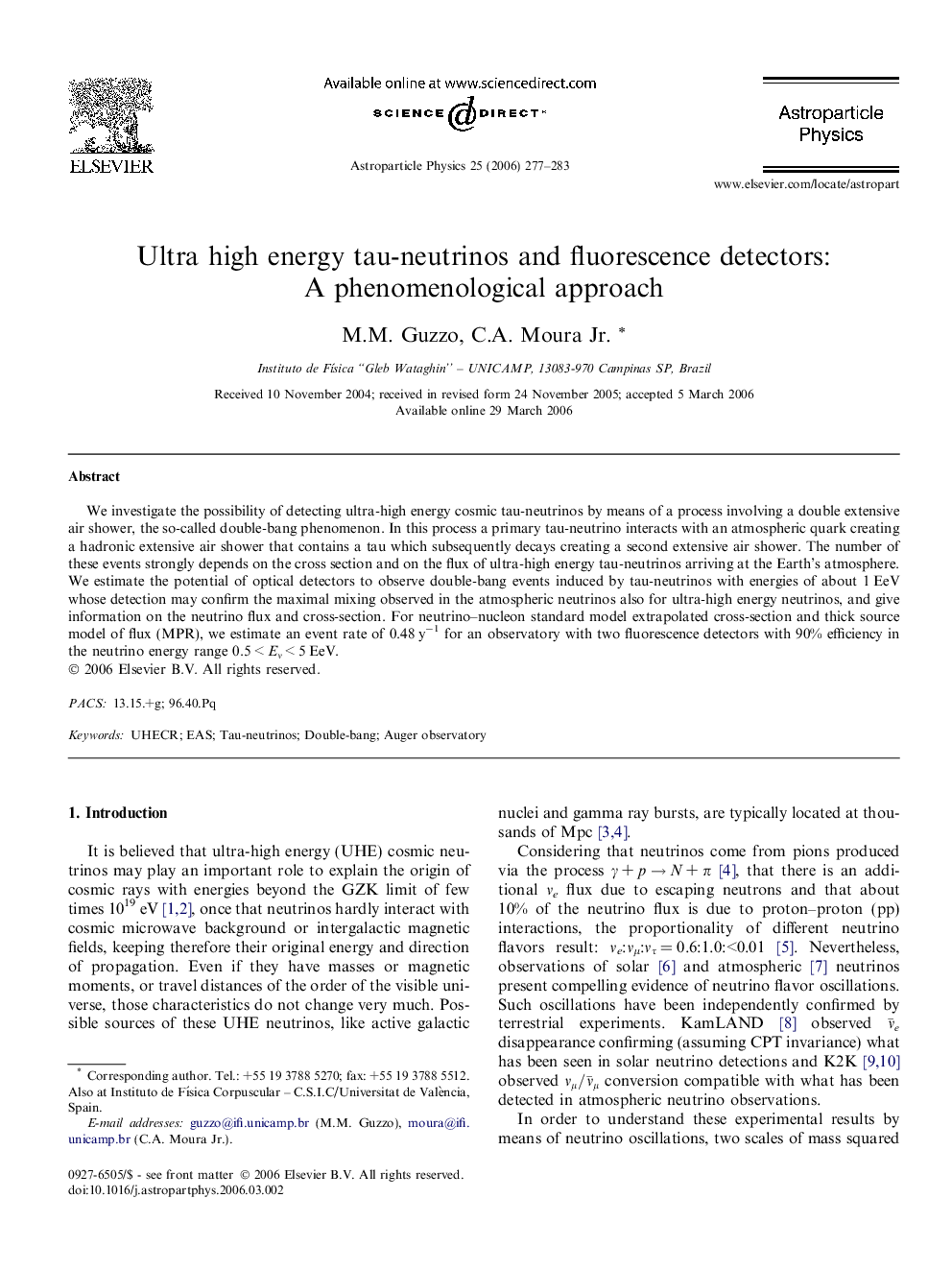| Article ID | Journal | Published Year | Pages | File Type |
|---|---|---|---|---|
| 1771580 | Astroparticle Physics | 2006 | 7 Pages |
Abstract
We investigate the possibility of detecting ultra-high energy cosmic tau-neutrinos by means of a process involving a double extensive air shower, the so-called double-bang phenomenon. In this process a primary tau-neutrino interacts with an atmospheric quark creating a hadronic extensive air shower that contains a tau which subsequently decays creating a second extensive air shower. The number of these events strongly depends on the cross section and on the flux of ultra-high energy tau-neutrinos arriving at the Earth's atmosphere. We estimate the potential of optical detectors to observe double-bang events induced by tau-neutrinos with energies of about 1 EeV whose detection may confirm the maximal mixing observed in the atmospheric neutrinos also for ultra-high energy neutrinos, and give information on the neutrino flux and cross-section. For neutrino-nucleon standard model extrapolated cross-section and thick source model of flux (MPR), we estimate an event rate of 0.48 yâ1 for an observatory with two fluorescence detectors with 90% efficiency in the neutrino energy range 0.5 < Eν < 5 EeV.
Related Topics
Physical Sciences and Engineering
Physics and Astronomy
Astronomy and Astrophysics
Authors
M.M. Guzzo, C.A. Jr.,
